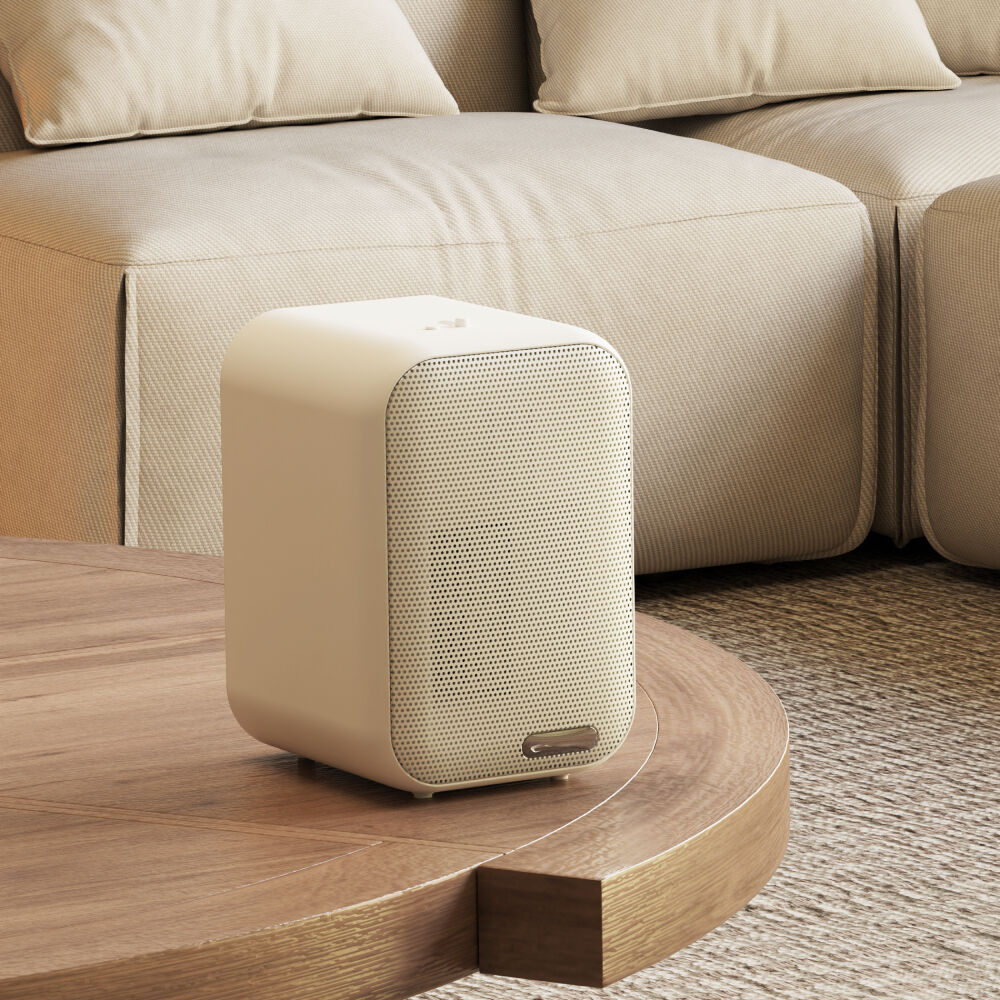How Often Should I Replace the Filter in My Air Cleaner?
Maintaining Peak Performance Through Proper Filter Care
Filter replacement stands as the most critical maintenance task for ensuring air cleaners continue operating at their intended efficiency levels. The frequency of changing filters depends on multiple variables including usage patterns, environmental conditions, and the specific technology employed in the air cleaning system. Most quality air cleaners feature indicator systems to alert users when filters require attention, but understanding the underlying factors helps owners make informed decisions. Regular filter changes prevent decreased airflow, reduced particle capture rates, and potential microbial growth that can occur in loaded filters. Proper filter maintenance not only preserves air cleaning performance but also extends the overall lifespan of the unit while keeping energy consumption in check.
Standard Filter Replacement Guidelines
HEPA Filter Replacement Cycles
True HEPA filters in quality air cleaners typically require replacement every 6 to 12 months under normal household conditions. Homes with multiple pets or residents with allergies may need more frequent changes, often every 3 to 6 months, due to higher particulate loads. Air cleaners operating in particularly polluted urban environments or during wildfire seasons often show accelerated filter loading that necessitates earlier replacement. Manufacturers usually provide recommended timelines, but actual replacement frequency should account for visible filter discoloration and reduced airflow. Some premium air cleaners feature pressure sensors that measure airflow resistance to indicate precisely when HEPA filters lose effectiveness. The investment in timely HEPA replacements ensures air cleaners maintain their promised capture rates for microscopic particles.
Activated Carbon Filter Lifespan
The activated carbon filters in air cleaners that handle odors and chemical vapors generally require more frequent replacement than HEPA filters, typically every 3 to 6 months. These filters lose effectiveness as their countless microscopic pores fill with adsorbed molecules, even when they appear physically clean. Air cleaners in households with smokers, strong cooking odors, or new furniture may exhaust carbon filters faster than average. Some advanced air cleaners use thicker carbon beds or special treatments that extend functional life to 6-9 months in normal conditions. Unlike particulate filters, carbon filters in air cleaners provide no visual indication of exhaustion, making scheduled replacement especially important for maintaining gaseous contaminant removal.

Factors Influencing Replacement Frequency
Environmental and Usage Conditions
Air cleaners in homes with multiple pets often require filter changes twice as frequently as those in pet-free environments due to increased dander production. Smoking indoors can reduce filter lifespan by 30-50% in air cleaners due to the sticky residue tobacco smoke leaves on filtration media. Geographic location plays a role—desert regions with more airborne dust or humid climates with higher mold spore counts accelerate filter loading. Seasonal factors also matter, with air cleaners working harder during pollen seasons or winter months when homes remain closed up. Households running air cleaners continuously rather than intermittently will naturally need more frequent filter replacements to maintain peak performance.
Filter Quality and Design Variations
Not all filters for air cleaners are created equal—thicker HEPA filters with more pleating often last longer than slim, budget-oriented versions. The density and composition of carbon filters varies significantly between air cleaner models, affecting their adsorption capacity and lifespan. Some premium air cleaners feature composite filters that combine media types, sometimes requiring full replacement even when only one component is exhausted. Aftermarket filters may not match OEM specifications, potentially affecting both performance and recommended replacement intervals. Understanding these differences helps owners of air cleaners make informed decisions when purchasing replacement filters rather than simply choosing the least expensive option.
Signs Your Filter Needs Replacement
Visible and Audible Indicators
Air cleaners often exhibit clear signs when filters require changing, starting with visible dirt accumulation on the intake side of the filter. A musty odor emanating from the unit suggests microbial growth in a loaded filter that needs immediate replacement. Increased operational noise indicates the fan working harder to push air through a clogged filter in the air cleaner. Reduced airflow from output vents becomes noticeable when filters reach capacity, sometimes accompanied by the unit running longer to achieve the same air cleaning results. Discoloration or dark spots on filters—especially in air cleaners handling smoke or wildfire pollution—provide visual confirmation of filter exhaustion.
Performance and Sensor Alerts
Many modern air cleaners feature filter life indicators that track usage hours or measure airflow resistance to calculate remaining filter life. Smart air cleaners may send mobile notifications when sensors detect decreased filtration efficiency requiring attention. A sudden increase in particle counts or odors despite continuous operation suggests filter failure in capable air cleaners. Units that automatically boost fan speed to compensate for loaded filters indicate the need for replacement through changed operation patterns. These technological indicators complement visual inspections to help owners maintain optimal air cleaner performance between scheduled replacements.
Maintenance Tips Between Replacements
Proper Filter Inspection Techniques
Regular inspection extends the effective life of filters in air cleaners while ensuring timely replacement when truly needed. HEPA filters should be examined monthly by removing them in good lighting and looking through the media against a bright background. Carbon filters require sniff tests—if odors pass through when the air cleaner runs on high, replacement is due regardless of the calendar date. Pre-filters included in many air cleaners should be vacuumed or washed according to manufacturer instructions to prolong main filter life. Careful handling during inspection prevents damage to delicate filter media that could compromise air cleaner effectiveness. These simple practices help owners get maximum value from each filter while avoiding premature replacements.
Cleaning and Care Procedures
Proper maintenance around filter changes keeps air cleaners functioning optimally—wiping down the filter compartment prevents accumulated dust from bypassing new filters. Some air cleaners allow gentle vacuuming of HEPA filters to extend their useful life slightly when replacement isn't immediately available. Following manufacturer instructions for filter orientation and seating ensures air cleaners don't develop leaks around improperly installed filters. Keeping a log of filter changes helps establish household-specific replacement schedules more accurate than generic recommendations. These practices complement timely filter replacement to maintain air cleaner performance between changes.
Specialized Filter Considerations
Washable and Permanent Filters
Some air cleaners feature washable pre-filters or permanent electrostatic filters that don't require regular replacement. These filters need thorough monthly cleaning according to manufacturer instructions to maintain air cleaner effectiveness. Over time, even permanent filters degrade and eventually require replacement—typically every 3-5 years depending on usage. The cleaning process for these filters must be meticulous, as residual dirt or improper drying can lead to mold growth that the air cleaner would then spread. While reducing ongoing costs, these filters often can't match the peak performance of disposable filters in high-end air cleaners.
Specialty and Hybrid Filters
Air cleaners designed for specific environments may include filters requiring unique replacement considerations. Medical-grade air cleaners often use ultra-fine filters that clog faster than standard HEPA filters. Industrial air cleaners handling hazardous materials sometimes feature sealed filter cartridges with strict replacement protocols. Hybrid filters combining HEPA, carbon, and antimicrobial layers may need replacement when any single layer is exhausted. Photocatalytic and plasma-based air cleaners have specialized components that require professional servicing rather than simple filter swaps. Understanding these variations ensures proper maintenance of specialized air cleaners beyond conventional residential units.
FAQ
Can I extend my air cleaner filter life by vacuuming it?
While gentle vacuuming can remove surface debris from some HEPA filters, this may only extend life by 10-15% and isn't recommended for carbon filters—eventual replacement remains necessary for optimal performance.
Why do some air cleaners need filter changes more often than others?
Replacement frequency varies based on filter size relative to unit capacity, air pollution levels, fan speed settings, and filter media quality—compact air cleaners processing dirty air daily naturally require more frequent changes.
Is it safe to use generic replacement filters in my air cleaner?
While often cheaper, generic filters may not match OEM specifications exactly, potentially reducing air cleaner efficiency by 10-30% or causing improper fits that allow air bypass—premium brands typically warrant sticking with manufacturer-approved replacements.

 EN
EN
 AR
AR
 NL
NL
 FR
FR
 DE
DE
 EL
EL
 HI
HI
 IT
IT
 JA
JA
 KO
KO
 PL
PL
 PT
PT
 ES
ES
 ID
ID
 VI
VI
 TH
TH
 TR
TR
 MS
MS
